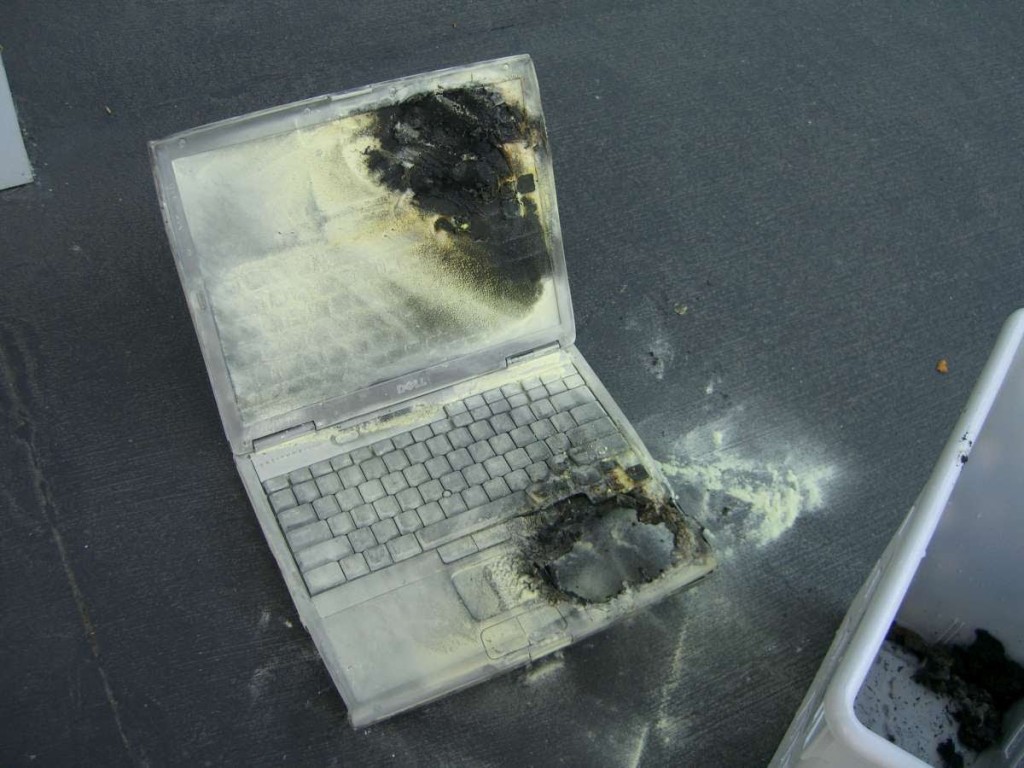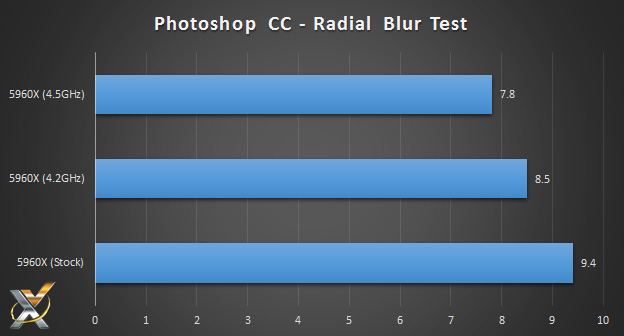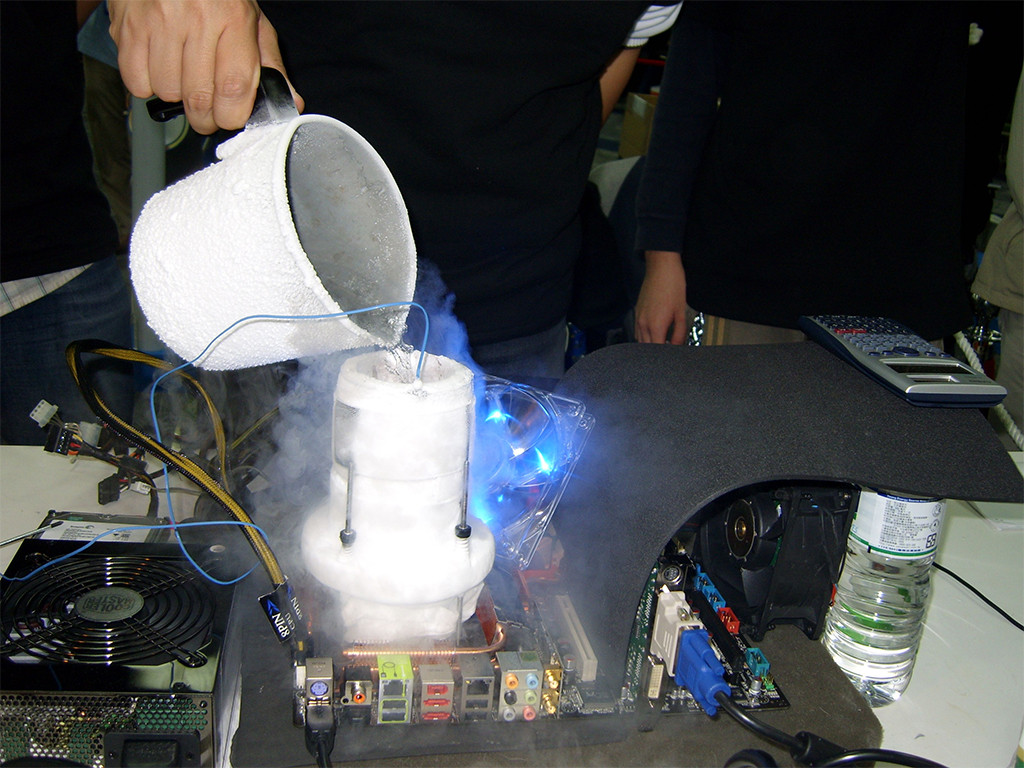As we frequently visit many online PC gaming communities, and sub-reddits, we’ve noticed that there are actually a lot of people who don’t have any experience with overclocking. This is troubling, since overclocking can actually provide a significant increase in performance at virtually no extra costs to the end-user, and while it may seem daunting at first, it has actually become increasingly less difficult to accomplish.
It is for these reasons that we’ve decided to bring you, our loyal viewers; A Beginner’s Guide to Overclocking Intel X99. We’ll start with a basic explanation of what overclocking is, run through some of the software used for overclocking as well as our hardware setup, and provide a simple, yet detailed guide to overclocking. Which should be easy to follow for even the most novice of users.
WHAT IS OVERCLOCKING?
We’d wager that most people reading this have probably heard the phrase used before, and likely even have some basic understanding of what it means. That being said, as this is a beginner’s guide, we will explain nonetheless.
In the context of PC components and hardware, overclocking refers to the process of modifying a piece of hardware such as a CPU or a graphics card, to run outside of the manufacturer’s rated specifications. Now, in doing so you may be thinking this will void your warranty, and for the most part you’d be right. However, lately overclocking has become less ‘taboo’ and much more accepted by component manufacturers, and in some cases is even sanctioned. Intel actually offers a protection plan specifically for overclocker’s, which you can purchase in addition to their standard 3-year warranty.
This is a good time for us to mention that overclocking your components may not only result in voiding of your manufacturer’s warranty, but also can degrade the life of your components, while drawing more power and generating more heat than stock configurations. You’ve been warned.
WHY SHOULD I OVERCLOCK?
At this point, after reading everything we’ve said above, you may be asking yourself “Why should I overclock?” and honestly, that is a perfectly reasonable question. The answer is pretty simple: Overclocking can provide performance gains equal to, or better than upgrading your existing hardware to the latest and greatest available. In some cases, it can be the difference between barely being able to run a game at 60 FPS and running it smoothly at 60 FPS or more. It can also provide significant performance increases in productivity software such as Photoshop or Premiere Pro and save you precious time.
To illustrate this, here is a benchmark of Photoshop CC comparing the difference between our Intel Core i7 5960X at Stock, and overclocked to 4.2GHz and 4.5GHz. (Results are measured in seconds, lower is better.)
But, there are many other reasons why people overclock; some do it for the bragging rights, some do it because they love to tinker, others for the challenge, hell there are even entire online communities dedicated to it and even world records for overclocking. Whatever your reason is, overclocking is definitely something every PC enthusiast should try at least once, and we hope this guide will encourage you to do so responsibly.
If you’ve read along this far, and you still want to make the plunge, jump over to the next page for our Hardware Overview.
 Technology X Tomorrow's Technology Today!
Technology X Tomorrow's Technology Today!





You overclocked 5960X from 3.0 to 4.2 Hhz (40%). Does that mean I can overclock a 5930K from 3.5 to 4.7 Ghz or somewhere close to that?
Your ability to overclock will vary depending on a few factors:
1. CPU Binning: Some CPUs can overclock higher at lower voltages than others.
2. Motherboard: Some motherboards can handle higher overclocks than others due to their VRM design.
3. Cooling: Obviously, the better cooling performance offered by your cooler the lower temperatures you’ll have, thus higher potential overclocks.
Every X99 motherboard we’ve tested has been able to overclock our 5960X to at least 4.5GHz stable, so we’d say most X99 motherboards will be able to do that without issue, some may just require more tweaking than others. In the case of your 5930K, if sufficient cooling is present and the chip is binned nicely, we’d say you should be able to hit between 4.5-4.7GHz fairly easily.
Hi Donny. Would this guide apply even if I was trying to OC to 4.6 or 4.7?? Or do other parameters come into play at those higher speeds?
Also if my RAM has an XMP profile that sets it to 2666 should that be “on” while doing the initial overclocking… or should I wait until I get a stable OC?
I think the “Adaptive” option should allow for efficient power management of the CPU, but no overclocking guide explains which parameters need twicking and how.
hi i have the same cpu and i cant even oc to 4.0 with out a freeze or something i try evrey single thing try to play with the volt and nothing work im not pass any software strees test only pass in normal 3.6 boost to 3.8 intel that it i want to get over that and icant
Nice guide, very straightforward. I’ve been doing this for a while, my first OC was an Intel 486 DX25 clocked to 50MHz – that’s a 100% speed boost just requiring the addition of a heatsink and fan (no heatsink required at stock). I’m new to the X99 platform though after moving “up” from an X58 and this has given me all the pointers I need.
I’d suggest anyone wanting to go down the OC route should seriously think about buying a closed-loop liquid cooler (a 120mm model with a deep radiator such as the Corsair H80i or Arctic Liquid Freezer will be a great starting place), and a case that’s designed with airflow in mind.
I use an old Lian Li PC-X500 case which offers unobstructed airflow from the front to the back straight over the CPU area and the VRMs, and the lower front fan keeps the GPU and PCIe slots well ventilated. A good case is a long-term investment and will see out several mobo/CPU swaps so budget for one. Sure, if you’ve got a tidy build you’ll want to show it off but for me airflow is everything and should take priority over bling.
As for the liquid cooling, it needn’t cost a great deal more than a good quality air cooler and the closed-loop “all-in-one” units offer a very simple installation with no maintenance required. Importantly, liquid cooling offers a much shorter cool-down time when the CPU punishment stops. A hot-running CPU may seem initially stable but can eventually suffer from a variety of problems that impact stability and longevity. Liquid cooling will keep it temps lower for more of the time, so again make sure you budget for it.